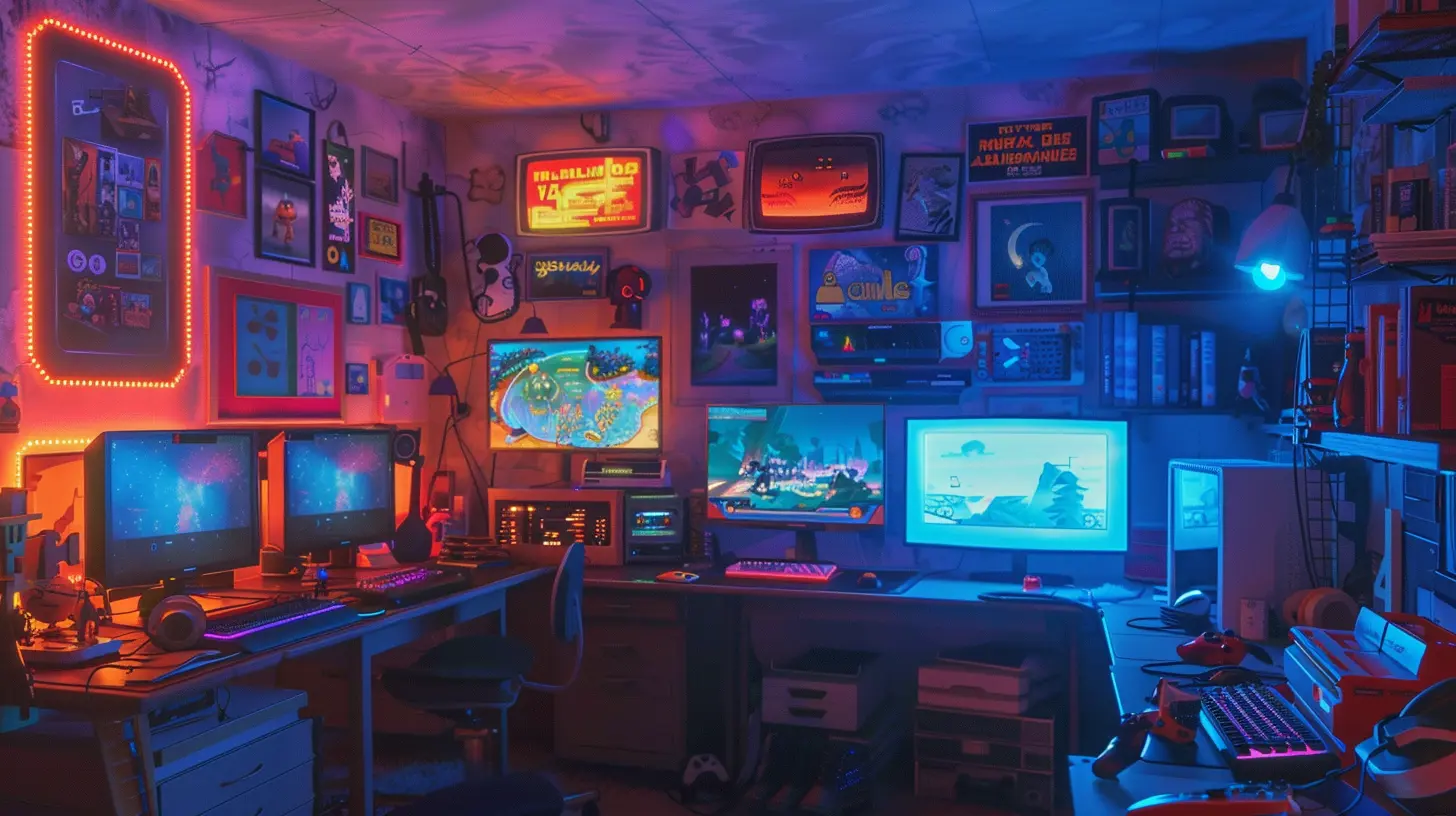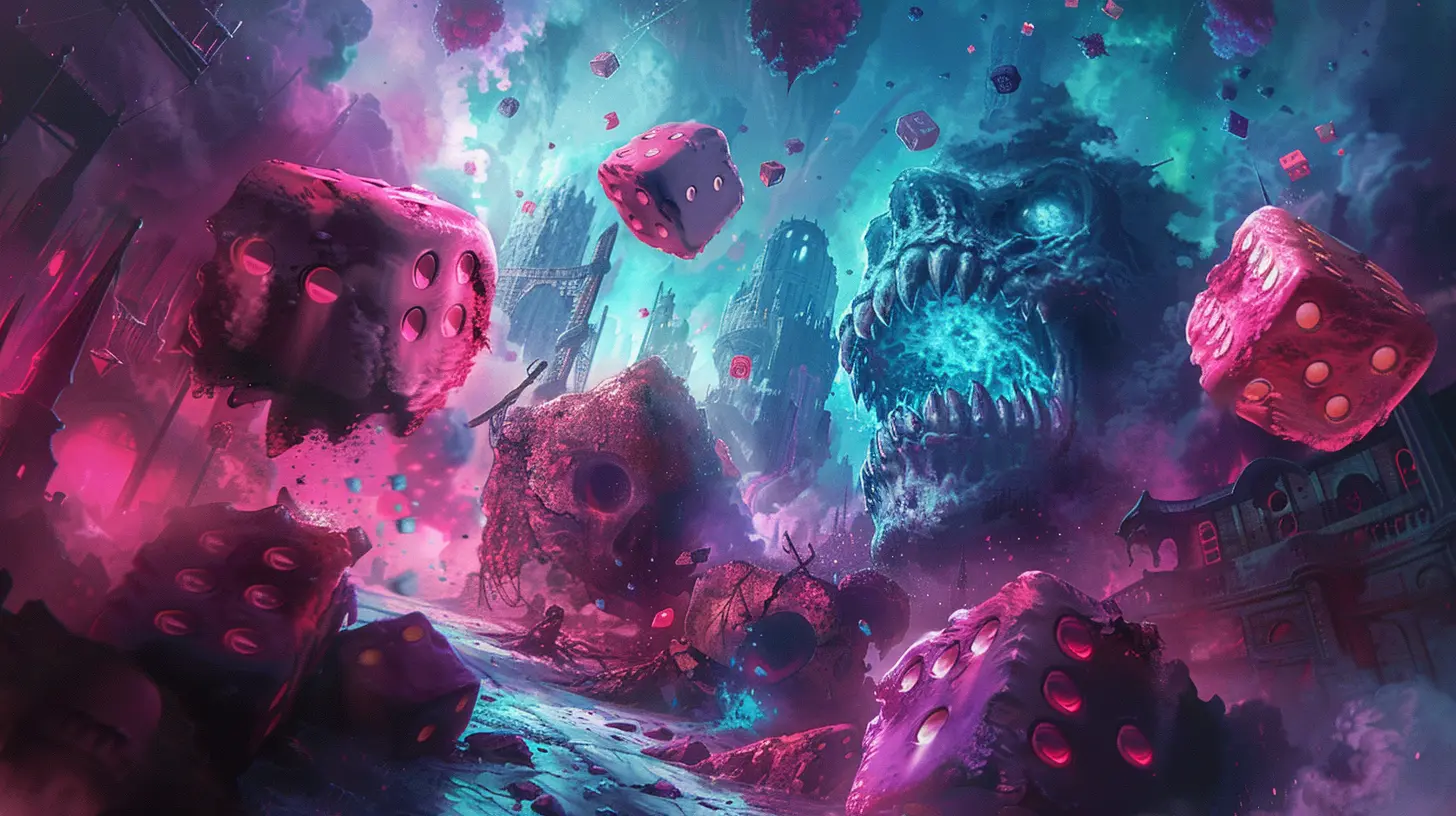The Psychology Behind Fun: What Makes a Game Addictive?
6 June 2025
Gaming isn’t just another way to pass the time—it’s a world, an experience, and for some, even a lifestyle. But have you ever stopped mid-game and asked yourself why you're still glued to the screen two hours later? What is it about games that keeps us coming back for "just one more round"? That nagging feeling to play again isn't just random—it's deeply rooted in psychology.
In this post, we’re diving headfirst into the fascinating science behind the fun. We’ll look at what makes games so irresistibly addictive, breaking down the psychological tricks and design elements that hook us hard. So, buckle up—because you’re about to look at your favorite games in a totally new way.
What Is Game Addiction, Really?
Let’s clear the air first—when we say “addictive,” we don't automatically mean it's a bad thing. Sure, anything in excess can cause problems, but when we call a game addictive, we're really saying it's engaging, immersive, and hard to put down.In psychological terms, addiction involves repetitive behavior driven by emotional satisfaction. In gaming, this translates to players feeling compelled to keep playing—not because they have to, but because they want to. Games don’t just entertain us—they reward us, challenge us, and make us feel good. That’s where the magic starts.
It All Starts with Dopamine: The Brain's Reward Juice
You know that little rush you feel after winning a round or leveling up? That’s dopamine doing its thing. This powerful neurotransmitter plays a huge role in motivation and pleasure.Games are dopamine machines. Every level cleared, item collected, or boss defeated triggers those sweet brain buzzes. The anticipation of a reward—and the randomness that often comes with it (hello, loot boxes!)—keeps our brains guessing and grinding for more. It’s basically a slot machine you control with a joystick or keyboard.
Ever heard of the “variable reward system”? It’s the same trick slot machines use. When rewards are unpredictable, they’re more exciting. Games like Fortnite, Apex Legends, or Genshin Impact nail this formula, giving you surprises that make every session feel like a party.
The Power of Progress: Why We Love Leveling Up
Humans are wired to seek improvement. We love watching numbers go up—whether it's XP points, in-game currency, or our kill/death ratio. It gives us a sense of accomplishment.Game developers know this and design progression systems that keep us grinding. Whether it’s RPGs with deep skill trees or online shooters with endless cosmetic unlocks, every small win feels like a personal triumph. It’s like digital self-improvement... without the treadmill.
And hey, who doesn’t love a good upgrade? Once you taste power, you want more of it. It’s the same reason we binge gym workouts or obsess over self-help books—games just package that desire into a more colorful, action-packed loop.
Challenges We Can Actually Win
Let’s be real—real life is messy. Goals take forever, feedback is slow, and sometimes, despite your efforts, things still fall apart.But games? They give us challenges that are actually achievable. You know the rules, the goals are clear, and the reward is immediate. That’s a powerful motivator. When life feels chaotic, games offer a sense of control.
Plus, difficulty levels mean we choose how hard we want things to be. That feeling of finally beating a tough boss after hours of trying? It’s pure gold. Instant gratification with a side of pride.
Social Connection: Multiplayer Magic
Gaming isn’t always a solo ride. In fact, some of the most addictive games are social at their core. Think of MMORPGs like World of Warcraft or competitive titles like CS:GO and Call of Duty.These games offer more than just single-player satisfaction. You're connecting with real people, building friendships (and rivalries), and being part of a community. The feeling of belonging is psychologically powerful.
Plus, nobody wants to be the weak link on their team, right? That pressure—to get better, to show up, to contribute—keeps players coming back night after night. It’s like a group project, but fun and with better loot.
The Art of Escapism: Reality? What’s That?
Games create worlds that are often more appealing than reality. Whether it's the vast plains of Hyrule or the neon streets of Night City, these digital universes offer a place to forget about taxes, deadlines, and spilled coffee.Escapism isn’t a bad thing—it’s therapeutic. Some people unwind with Netflix, others with a fantasy novel. Gamers power up their PC or console and dive into a world where they’re the hero.
When life gets stressful, games provide a safe, structured place where goals are clear, rewards are consistent, and your efforts actually pay off.
Loops on Loops: The Perfect Gameplay Cycle
Ever noticed how some games seem to play themselves? Okay, not literally, but you fall into a rhythm: fight > loot > upgrade > repeat. That’s a core gameplay loop.When done right, these loops are hypnotic. You always feel like you’re just a few minutes away from your next achievement. The best games layer short-term, mid-term, and long-term loops:
- Short-term: Immediate fun—combat, exploration
- Mid-term: Unlocks and rewards—new gear, skill trees
- Long-term: Bigger goals—beating the story, ranking up
Each loop feeds the other, creating a cycle that’s hard to break. It’s like TikTok but with swords and dragons.
The FOMO Factor: Limited-Time Madness
Ever seen that “event ends in 3 days” message and felt an urge to jump in? That’s FOMO—the fear of missing out—and games use it like a charm.Limited-time events, exclusive skins, seasonal updates... it’s all designed to tug at your psyche. If you don’t log in today, you might lose your only chance to grab that cool-looking gear.
This taps into what psychologists call “loss aversion.” We hate missing opportunities more than we like gaining something new. Smart devs exploit this to keep player engagement sky-high.
Personalization: Your Game, Your Way
One of the sneakiest tools in a game’s addictive arsenal? Customization. Whether it’s building your ideal character, decorating your hideout, or tuning your loadout, games let you express your identity.That choice makes you more invested. You’re not just playing a game—you’re playing your game. That emotional connection deepens your engagement and keeps you coming back, not just to win, but to nurture the world you've crafted.
Even cosmetic-only features (like skins or emotes) tap into this. You’re not just flexing skills; you’re building a persona within a virtual world.
The Role of Routine: Habits Form Fast
Ever planned to play "just 30 minutes" and realized it’s been three hours? Games are great at becoming part of your daily routine. And once something becomes a habit, it sticks.Mobile games especially design around this. Daily login rewards, missions that reset every 24 hours, energy systems that refill over time—they pull you in, little by little.
It's a gentle nudge that eventually becomes a solid push. Before you know it, your brain includes gaming in its daily “to-do” list—right next to brushing your teeth and checking Instagram.
The Sound and Fury: Sensory Feedback
Don’t underestimate the role of game sound design and visuals. That satisfying “ding” when you score a headshot? The rumble of your controller when you dodge a blast? It’s all part of the feedback loop.Games are built to make actions feel good. If you shoot something, you want the sound to echo like thunder. If you open a treasure chest, you want the loot to sparkle and pop. These little effects amplify our sense of reward.
It’s like ASMR for gamers—tiny sensory thrills that make even simple actions rewarding. That’s not just good design—it’s psychology doing cartwheels.
When Is It Too Fun?
Let’s get a bit serious for a sec. While the science of fun is fascinating, it does walk a tightrope. For some players, “addictive” turns into actual addiction. When gaming starts interfering with work, relationships, or health, it’s time to pause.The same psychological hooks that make games fun can also backfire. Developers and players alike need to be mindful of balance.
Games should feel good, not too good—to the point that reality becomes a distant memory. Moderation is key. Think of gaming as dessert: delicious, but not meant to be dinner.
Final Thoughts: Why We Keep Coming Back
At the end of the day, games are one of the most intelligently designed sources of entertainment on the planet. They don’t just engage your thumbs—they engage your emotions, your brain, your need for progress, and your desire for connection.Understanding the psychology behind fun makes you a smarter player. You can appreciate why a game keeps you up all night—and maybe even recognize when it’s time to log off and stretch a bit.
So the next time you find yourself stuck in the “one more match” loop, take a second to appreciate it. Behind every digital wave of fun lies a mountain of brain science doing its thing.
all images in this post were generated using AI tools
Category:
Game DesignAuthor:

Aurora Sharpe
Discussion
rate this article
3 comments
Arden Monroe
This article astutely explores the intricate interplay of psychology and game design that fosters addiction. By dissecting elements like reward loops and player engagement, it uncovers not just what makes games fun, but also the implications of their potentially manipulative nature.
June 17, 2025 at 3:03 PM

Aurora Sharpe
Thank you for your insightful comment! I'm glad you found the exploration of psychology and game design compelling. It’s crucial to understand both the enjoyment and the ethical implications involved.
Sylvia Maddox
This article insightfully explores the intricate balance between reward systems and player psychology, highlighting how understanding these elements can enhance game design and player engagement.
June 13, 2025 at 4:27 PM

Aurora Sharpe
Thank you for your insightful comment! I'm glad you found the exploration of reward systems and player psychology valuable for game design.
Honor McFarland
Great insights! Understanding the psychology of what draws us into games is fascinating. It’s amazing how a blend of challenge, reward, and community can create such addictive fun. Looking forward to more articles like this!
June 6, 2025 at 3:18 PM

Aurora Sharpe
Thank you! I’m glad you found it fascinating. There’s so much more to explore in this area, and I appreciate your support!



